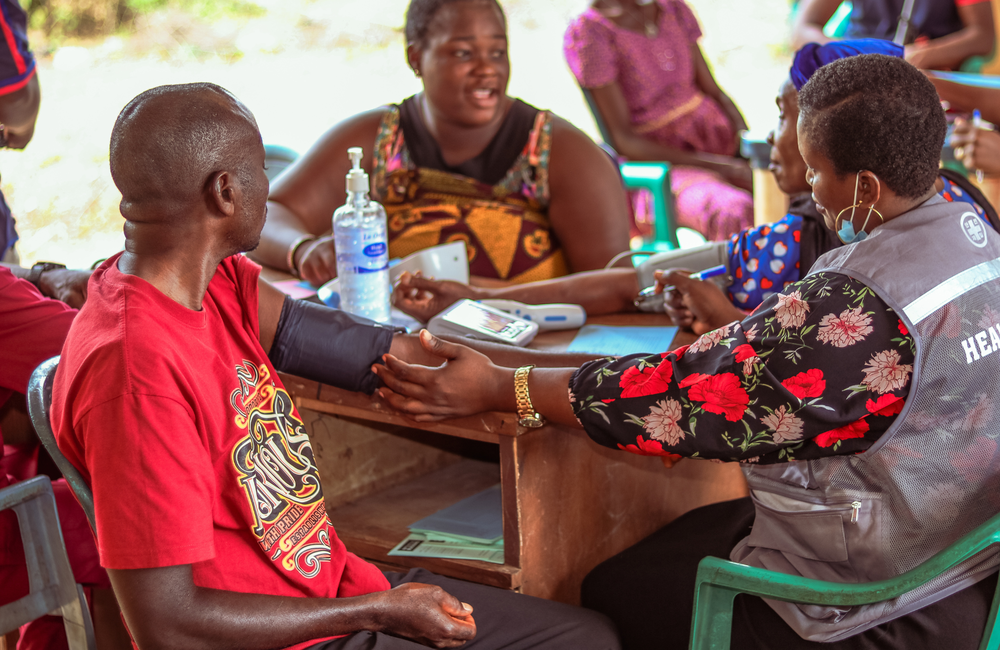
Blood pressure control using medication is feasible and highly effective in people with HIV taking antiretroviral treatment in Uganda, researchers from Makerere University report in the Journal of Human Hypertension.
They found that using one drug (amlodipine) was sufficient to achieve blood pressure control in 96% of people with blood pressure below 160/100 (stage 1 hypertension).
High blood pressure is common in people with HIV. As people with HIV grow older, high blood pressure becomes a more frequent health problem. Left untreated, high blood pressure contributes to the development of heart disease, stroke and kidney disease.
In addition to the classic risk factors of age and higher body weight, two clinical trials in Cameroon and South Africa found that people taking antiretroviral treatment containing dolutegravir were more likely to develop high blood pressure. But it was unclear if high blood pressure was a direct consequence of taking dolutegravir or if it was result of the greater weight gain associated with dolutegravir-based treatment.
An international cohort study concluded that increases in blood pressure were associated with the drugs taken, irrespective of weight. People who took an integrase inhibitor and tenofovir alafenamide were more likely to have high blood pressure than those who did not take these drugs, as were people who took either an integrase inhibitor or tenofovir alafenamide.
As more people with HIV transition to dolutegravir-based treatment, increases in blood pressure associated with the drug may become more common, increasing the need for management of hypertension in HIV programmes.
Blood pressure monitoring and treatment varies in comprehensiveness in low- and middle-income settings. Whereas participants in a large clinical trial of antiretroviral treatment in South Africa routinely received treatment if they developed high blood pressure, participants in the clinical trial in Cameroon did not.
Integrating monitoring and treatment into existing HIV treatment programmes can be challenging if HIV care has been devolved to primary health care facilities and staff do not have training in how to manage hypertension. The extra cost of medication to treat high blood pressure can also be a burden for people with HIV and drug stockouts affect continuity of treatment.
In Uganda, clinicians at Mulago National Referral Hospital in Kampala, began integrating blood pressure management into HIV care in 2019. They established a prospective cohort study to evaluate the effectiveness and feasibility of drug treatment to manage hypertension, using the WHO HEARTS treatment protocol.
People with blood pressure in the range 140-159 (diastolic) and 90-99 (systolic pressure) (hypertension grade 1) started treatment with amlodipine 5mg and continued on this treatment if their blood pressure was controlled below 140/90 after one month. Those with higher blood pressure or uncontrolled blood pressure despite single-drug treatment received amlodipine 5mg and valsartan 80mg, with dose escalation at months 3 and 4 if blood pressure remained uncontrolled. If blood pressure remained uncontrolled at month 5, hydroclorothiazide 12.5mg was added.
In 2019 and 2020, 877 people with HIV were enrolled, none of them with a previous history of treatment for high blood pressure.
The majority of people treated for hypertension were aged 50 or over, had CD4 counts above 200 and had been taking antiretroviral treatment for five to ten years. The most common treatment regimens were zidovudine, lamivudine and nevirapine (40%) or tenofovir, lamivudine and efavirenz (25%). Sixty-two percent of study participants were female.
Thirty percent had grade one hypertension and started treatment with amlodipine. People with grade one hypertension were slightly more likely to have obesity, and to be female, and slightly less likely to have diabetes or to have taken antiretroviral treatment for at least five years. But these differences were small.
Two-thirds achieved blood pressure control (<140 and/or < 90) within one month; 22% achieved control on two drugs after two months. By month 4, 96% of those with grade one hypertension had achieved blood pressure control.
Among those with grade 2 hypertension, 69% had blood pressure in the range 160-179 and/or 100/109, 22% had blood pressure between 180-199 and/or 110-119 and 9% had blood pressure above 100 and/or above 120.
In this group, control was achieved on two-drug treatment in 56% after one month, in 83% after two months and in 88% after three months. Two percent needed three drugs to achieve control after four months.
Among all people treated, a longer time to blood pressure control was associated with a high mean systolic blood pressure or a baseline antiretroviral regimen consisting of tenofovir, lamivudine and efavirenz. People who had been taking antiretroviral treatment for at least ten years achieved blood pressure control quicker.
The investigators say that the rates of blood pressure control observed in this study are high in comparison with studies in the general population in the United States and Malaysia, each of which achieved control in approximately two-thirds of participants. The favourable outcome of the Ugandan study may have been affected by ongoing adherence counselling already in place to support antiretroviral treatment. Longer experience of adhering to antiretroviral therapy may explain why people who had been on treatment for at least ten years achieved blood pressure control more quickly than others, the authors suggest.
Amutuhaire W et al. Time to blood pressure control and predictors among patients receiving integrated treatment for hypertension and HIV based on an adapted WHO HEARTS implementation strategy at a large urban HIV clinic in Uganda. Journal of Human Hypertension, published online 1 February 2024 (open access).
